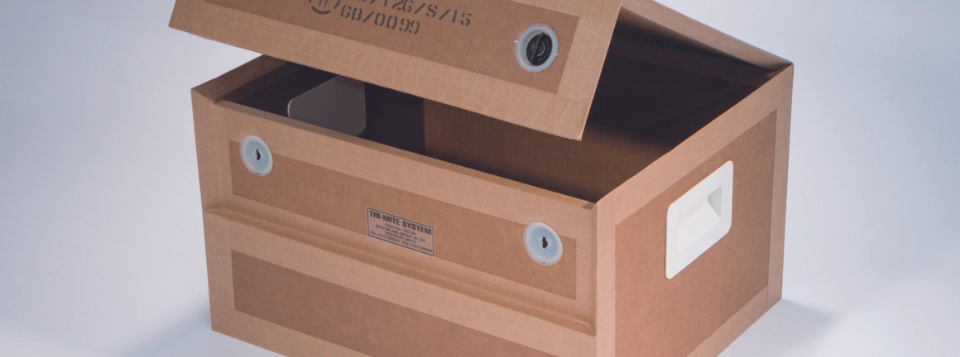Sustainable packaging swaps for manufacturers

As the public is becoming increasingly aware of environmental issues, manufacturers are under growing pressure to adopt more sustainable practices.
A significant area to focus environmental developments on is packaging. While the primary purpose of packaging is to protect products, the wider impact on key business areas is hard to miss. Having the right pack means reducing carbon emissions and product waste, while lowering costs and increasing productivity in your supply chain.
Achieving this delicate balance requires innovative approaches and a commitment to sustainable materials. This blog explores some sustainable packaging swaps that manufacturers can implement to create efficient, eco-friendly and protective packaging solutions.
- 1.
- 2.
- 3.
- 4.

Three reasons eco-friendly packaging is important for manufacturers
Eco-friendly packaging is no longer just a trend or something businesses can forget to consider. Consumers, governments and industries demand more sustainable practices as environmental awareness grows.
1. Environmental responsibility
Eco-friendly packaging is not just a beneficial practice but an essential strategy for manufacturers.
Not only do most businesses now have internal Environmental, Social and Governance (ESG) goals, but it also enhances their brand and (most importantly) protects the planet.
By adopting sustainable packaging solutions manufacturers can addresses environmental concerns whilst meeting regulatory and consumer demands. All while providing economic and competitive advantages across all industries.
2. Regulatory compliance
Depending on where you’re based, government legislation can differ. However, regulations around sustainable practices are not uncommon in most European countries. Some notable legislation is:
- UK Plastic Packaging Tax – This tax applies a levy to plastic packaging materials that contain less than 30% recycled content. Learn more here.
- EU Corporate Sustainability Reporting Directive – This directive requires at least 50,000 large companies within the EU, to create a report on their social and environmental impact actions from 2024 onwards. Learn more here.
- Extended Producer Responsibilities – This legislation shifts the cost of household packaging waste management to producers. Learn more here.
3. Economic Benefits
Manufacturers need to consider the long-term cost-saving benefits of eco-friendly packaging. For example, a less complex and purpose-built pack can reduce material usage, save space and lower transport costs, all while still providing high levels of protection.

How to choose the right sustainable packaging solution for your business
Selecting the right sustainable packaging solution is crucial for manufacturers aiming to balance environmental responsibility with operational efficiency. Here are some simple steps to follow when choosing the right sustainable solution:
- Assess your needs – Size, shape, weight and fragility will influence the type of packaging you need.
- Evaluate sustainable materials – While using recyclable materials would be beneficial, you should also consider what kind of protection you need. Sometimes, you do need to consider a more nuanced approach to find the right balance for your products.
- Consider holistic approaches to sustainability – Maybe a returnable solution would better suit your business; not only would it benefit your cost savings, but it would also lower wastage.
Once you have decided on a solution that suits your business, remember to review your packaging regularly. As innovations are continually launched, it’s important to keep up with any new technologies or regulations in sustainable packaging.
The 4R packaging principle
A widely adopted concept across many industries is the 4R principle, which you may want to consider also. For our industry, we think it’s important to design packaging that touches on these four points:
Reduce – Pack designs that are functional, easy to use, and fully protective. Most importantly, they use as little material as possible and are compact and light to help reduce waste and shipping costs. Reducing your pack size, weight or waste has the biggest impact in overall CO2 emissions throughout the supply chain
Reuse –Wherever opportunities for ‘closed loop’ operations exist, packs should be robust enough for multi-trip use and efficient longer-term investment.
Recycle – We use readily recyclable materials. Even existing packs can be redesigned to provide superior protection using more sustainable materials.
Recover – Where possible, design packaging using materials that can be recycled or composted rather than being thrown away. Learn more about designing for a circular economy.

Sustainable packaging swaps
Long-term sustainability in packaging involves more than using eco-friendly materials; it requires a comprehensive approach and nuanced discussions about the right solutions for your business.
We’d always recommend communicating with us directly for customised advice to suit your goals and industry.
The swaps we recommend will help you lower your overall carbon footprint, use less material and boost the sustainability of your supply chain.
Swapping wooden pallets for cardboard pallets
While wooden pallets are the most common type of pallet, hidden environmental costs should be considered. Made from soft and hard woods or plywood, they can be heavy and difficult to handle.
Corrugated cardboard pallets might be the solution for a lightweight alternative. The main area where you’ll see environmental improvement is during your shipping process. Whilst it’s not a direct enhancement, you’ll benefit from the knock-on effect of reduced carbon emissions and lower fuel consumption.
Benefits of corrugated cardboard pallets
- Lightweight
- Can hold up to 750kg
- Exempt from IPSM15 requirements
- Recyclable
Swapping timber crates for Tri-Mite system
Timber crates offer many advantages, such as strength and durability, but they tend to be heavier and bulkier than alternative materials, such as cardboard or plastic.
This can raise your shipping costs significantly, especially for air freight, and it may also restrict the amount of cargo in one shipment. Heavier weights often result in higher transportation emissions and increased energy usage.
The Tri-Mite system is a comparably strong but lightweight alternative. The containers are made with strong triple-wall corrugated cardboard, and thanks to the multi-trip locking fasteners, they are suitable for reusable applications.
Reusing packaging reduces environmental impact by minimising the energy used in recycling and remanufacturing, significantly lowering the overall impact per trip.
Benefits of corrugated Tri-Mite system
- Strong packaging solution
- Extra strength due to precise joints
- Easy stacking
- Made from recyclable materials
- Reusable
- High levels of product protection
- Reduces waste
Swapping foam inserts for cardboard fittings
Foam inserts protect your products during shipment, from transportation to handling. This lowers product damages for high-value or fragile items. Most foam inserts are made from some form of plastic, including polystyrene and polyethene.
If the intention is to reuse them, that can slightly offset the environmental impact, but they will likely need to be disposed of eventually. This can raise issues due to their non-biodegradability, and if not recycled properly, they will persist in landfills for long periods of time.
Cardboard fittings are an alternative solution that still offers high levels of product protection. Such as foam inserts, cardboard fittings will stop your products moving around during transport and offer sustainable benefits too. Cardboard is biodegradable and recyclable for end-of-life disposal.
Benefits of cardboard fittings
- More space efficient – can be supplied flat
- High levels of product protection
- 100% recyclable
- Biodegradable
- Custom made to limit movement during shipment

How Macfarlane Packaging can support your environmental goals
Balancing material usage with product protection requires innovative design and advanced manufacturing techniques, but the environmental and brand reputation benefits are well worth the effort.
As the industry continues to evolve, those who embrace sustainable practices will lead the way in creating a more sustainable future.
If you’d like custom advice to enhance your sustainability and improve your supply chain, get in touch today.
